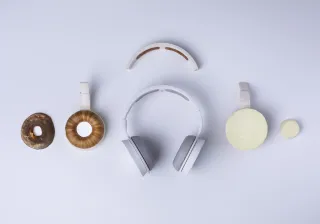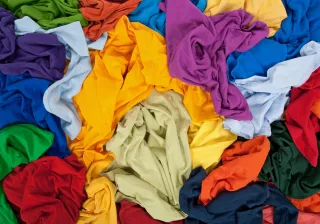Who would not want to favour wood-based products with properties matching plastics in terms of quality and price. But what are all the purposes our forests need to suffice for in the future? It is time to discuss the sustainability of biomaterials.
Our forests are growing at a higher rate than ever before. At the same time, our concerns for the biodiversity of forest ecosystems are also growing, because the use of wood is increasing due to the growth of world population and consumption. We are also developing new uses for wood all the time.
Even now, wood-based biomaterials are being used for replacing plastics in packaging, insulation materials, and even car parts and sinks. The pioneering examples paint a picture of a future where the times of fossil carbon emissions are over. But is there enough forest biomass to support such a vision?
How to evaluate the sustainability of a bioproduct?
We must prepare ourselves for a situation in which a wood-based protective film or cardboard package competes over the same raw materials as wood-based insulations and paints. Or maybe the winner is a smart biomaterial that utilises the active properties of wood to capture drug residues or microplastics from bodies of water. Such solutions have already been developed.
It would be important to be able to communicate the order of priority to be applied to bioproducts to consumers, designers and decision-makers. To succeed in the effort, we need to create indicators for the sustainability of bioproducts in the near future. There are numerous variables involved.
Since bioproducts bind carbon, a long service life and recyclability will undeniably increase their value. Other factors affecting the value include the materials the biomaterial replaces and how smartly it operates. In addition, sustainable solutions use all the wood for as high-value products as possible.
All the wood material to good use – including the lignin
Wood materials are used to the last bit in the manufacture of newsprint and some cardboards, whereas magazine paper and soft tissue and many cardboard varieties are manufactured from pulp. Many novel biomaterials are also made of pulp, or nanocellulose refined from pulp.
Pulp is a fibrous cellulose material from which lignin, the substance maintaining the rigidity of wood, has been removed by dissolving it out, or more commonly, by burning. However, in recent years, new uses have been invented for lignin, such as a binder in the wood panel and furniture industry and as a plasticiser in the concrete industry.
With a view to sustainability, lignin utilisation is more than welcome: The pulp production side-stream is put to good use. In addition, the lignin captures carbon in the same manner as cellulose. In other words, if used for durable products, it provides excellent carbon capture properties and can replace materials of fossil origin.
The essential requirement with a view to the mitigation of climate change is that fossil carbon is no longer released to the atmosphere, and therefore renewable wood-based charcoal is without compare. Of course, field crops also provide renewable charcoal. In such a case, the sustainability of the material is strongly affected by whether the production of the biomaterial competes with food production or whether it uses the inedible parts of field biomass.
All in all, there is a good acceleration phase going on in the development of new kinds of uses for cellulose, hemicellulose and lignin, and we can expect to see many innovations in the field soon. This is definitely a good trend, even though it eventually tightens the competition over biomass. We need plenty of valuable alternatives to choose from in the future.










